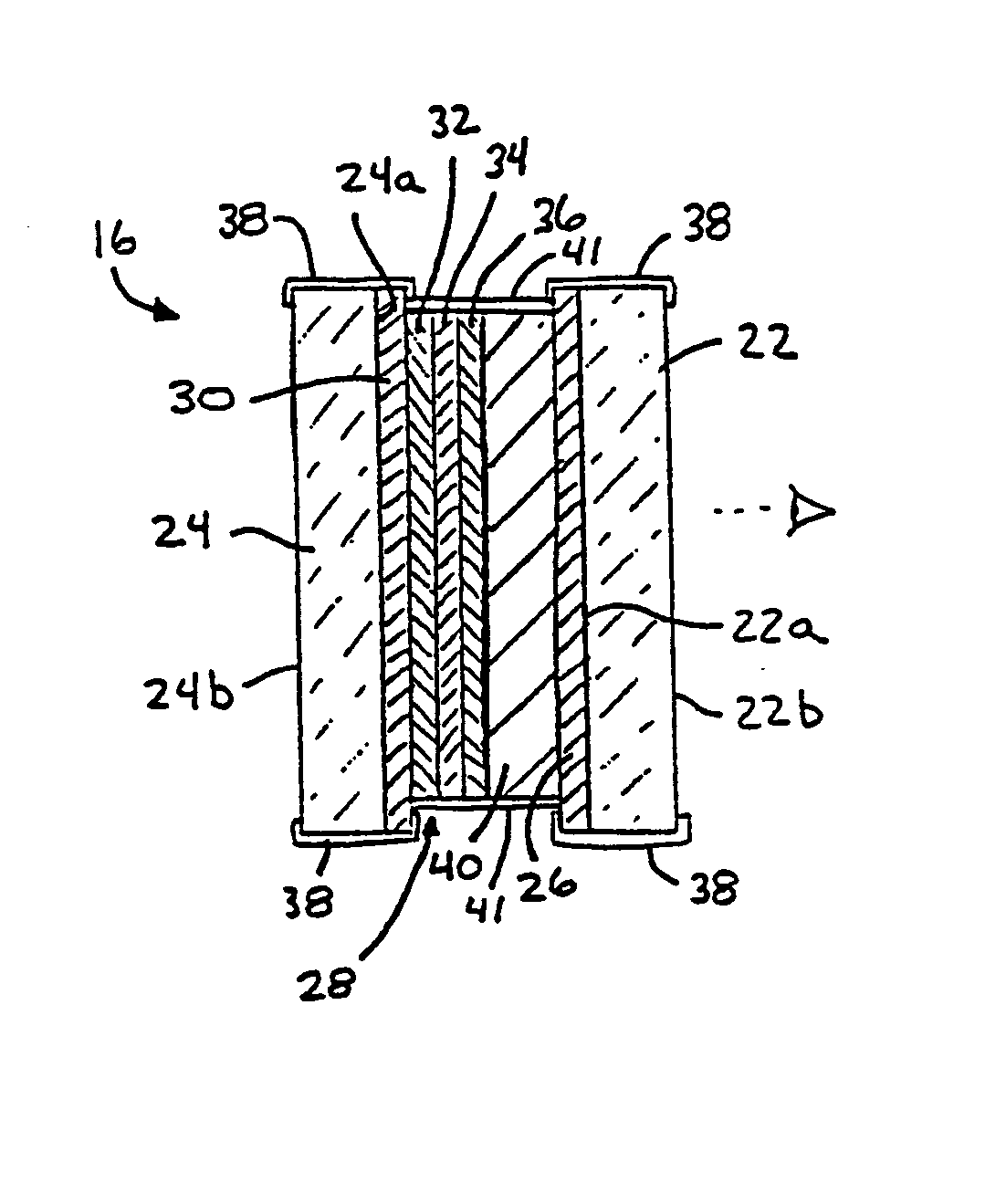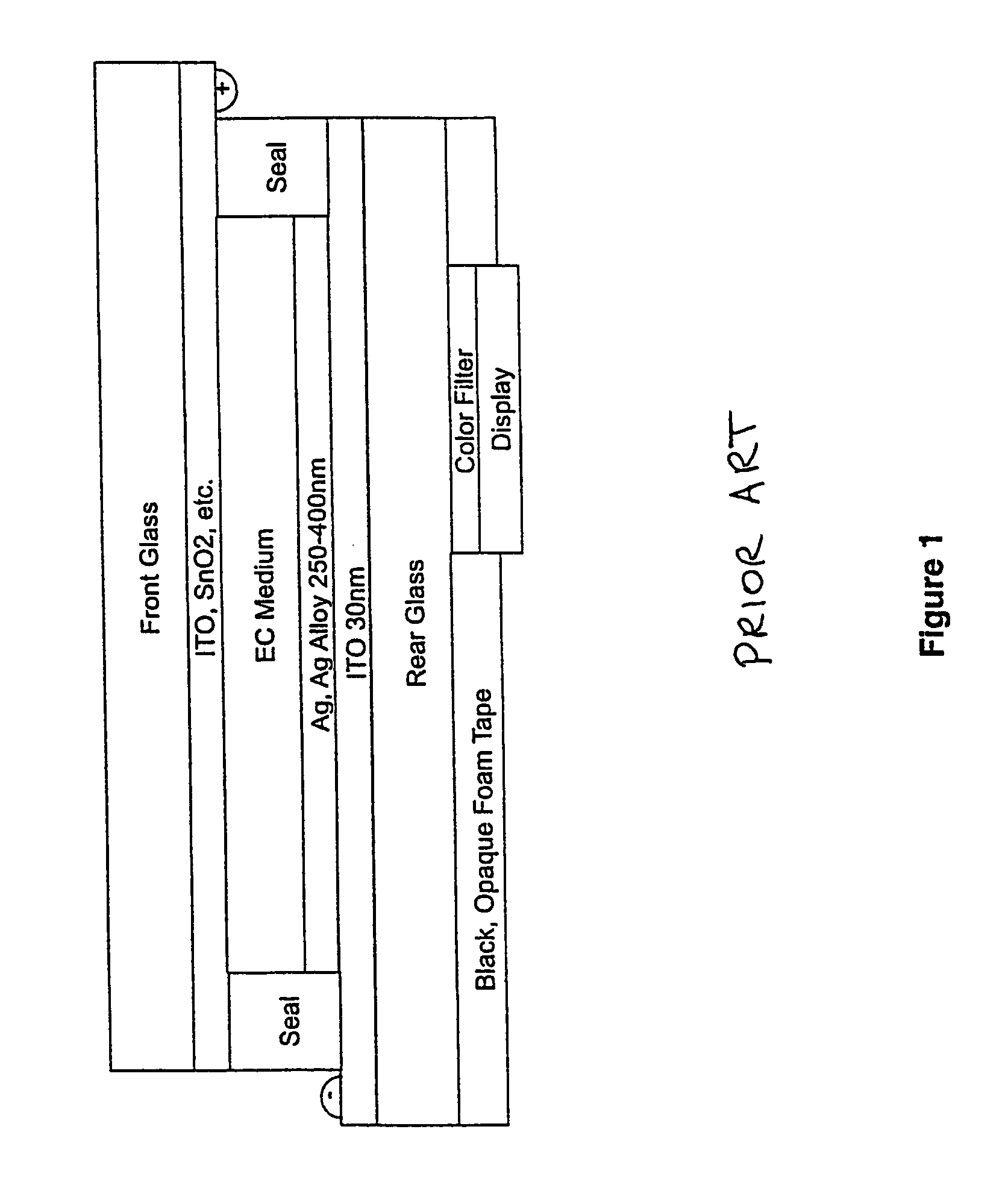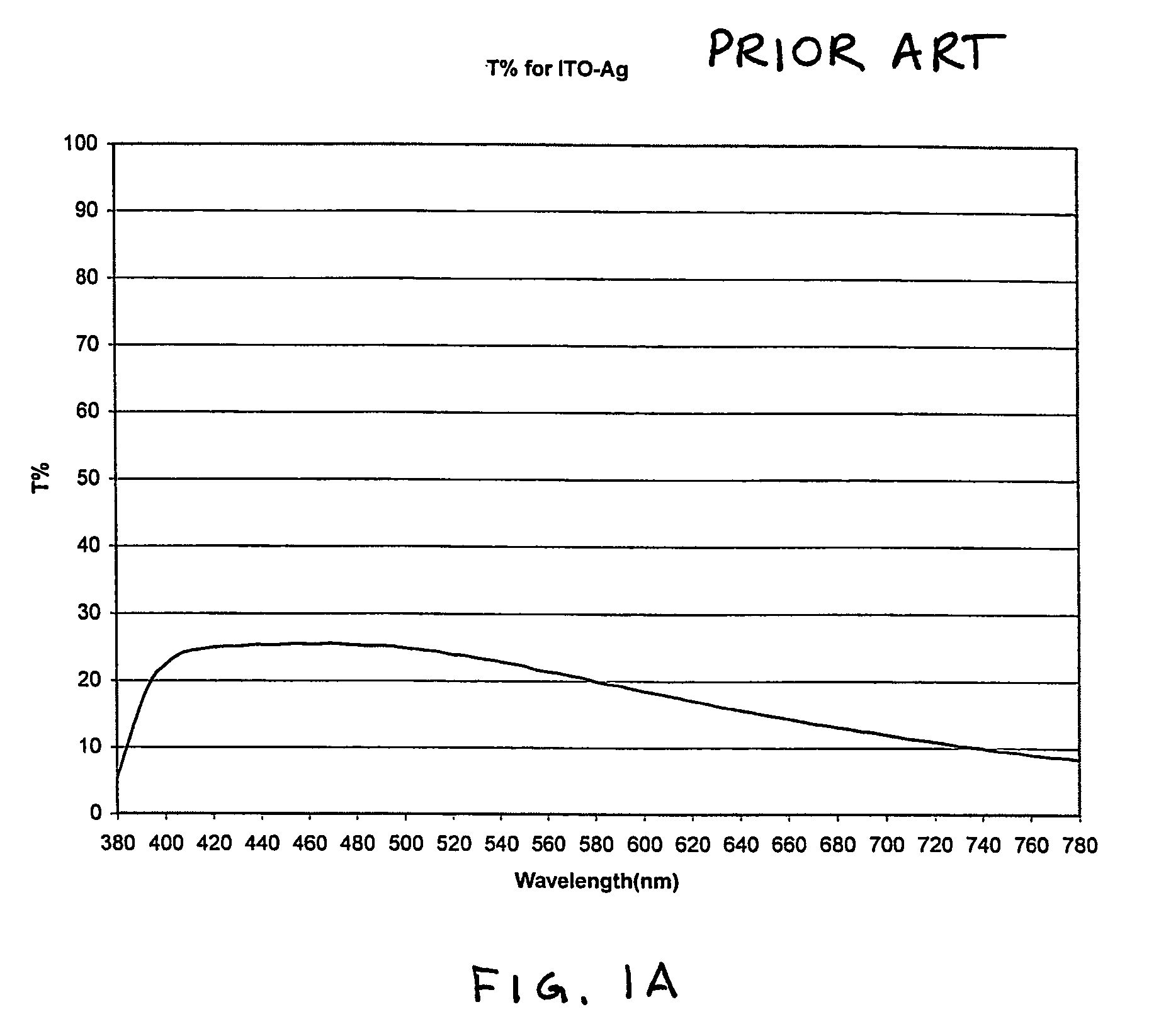Mirror reflective element assembly
a technology of mirror reflective elements and components, applied in the direction of mirrors, mountings, instruments, etc., can solve the problems of limited display size and quantity, loss of reflectivity in the window area, corrosion of the metallic layer, etc., to achieve enhanced transmissivity, limit tinting and/or color interference, and low cost
- Summary
- Abstract
- Description
- Claims
- Application Information
AI Technical Summary
Benefits of technology
Problems solved by technology
Method used
Image
Examples
Embodiment Construction
[0073]Referring now to the drawings and the illustrative embodiments depicted therein, an electrochromic interior rearview mirror assembly 10 is mounted to a mounting button 12 mounted at an interior surface of a windshield 14 of a vehicle (FIG. 2). Mirror assembly 10 includes a housing or casing 15 and an electrochromic reflective element or mirror element or cell 16 which has electrically variable reflectivity. Reflective element 16 includes first and second glass substrates 22, 24, and provides a third surface reflective element, whereby the reflective coating of the reflective element 16 is deposited on the third surface 24a of the substrates (FIG. 3). An electrochromic medium 40 and a plurality of metallic and non-metallic conductive or semi-conductive layers 28 are disposed between the electrochromic medium 40 and the second substrate 24. The refractive indices and physical thicknesses of the layers are selected to maximize transmission of a particular spectral band of light w...
PUM
| Property | Measurement | Unit |
|---|---|---|
| photopic reflectance | aaaaa | aaaaa |
| photopic reflectance | aaaaa | aaaaa |
| photopic reflectance | aaaaa | aaaaa |
Abstract
Description
Claims
Application Information
 Login to View More
Login to View More - R&D
- Intellectual Property
- Life Sciences
- Materials
- Tech Scout
- Unparalleled Data Quality
- Higher Quality Content
- 60% Fewer Hallucinations
Browse by: Latest US Patents, China's latest patents, Technical Efficacy Thesaurus, Application Domain, Technology Topic, Popular Technical Reports.
© 2025 PatSnap. All rights reserved.Legal|Privacy policy|Modern Slavery Act Transparency Statement|Sitemap|About US| Contact US: help@patsnap.com



